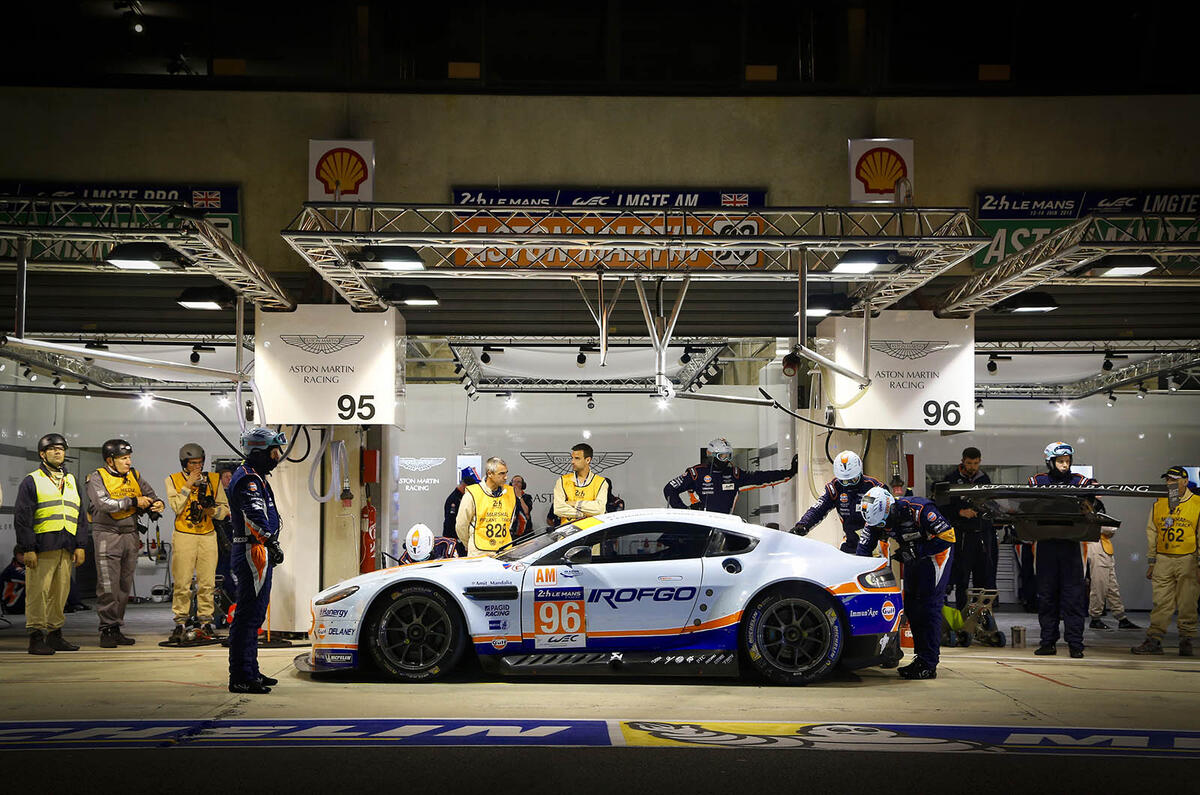“We’ll start preparing for the 2016 Le Mans 24 Hours on Monday [after the race],” says Aston Martin team principal John Gaw the day before this year’s event.
Preparation is at the heart of everything that comprises a factory attack on the world’s biggest race, and while on face value that is hardly surprising, it is the minute detail that will count toward success or failure.
Over 24 hours, things will go wrong, that is certain. Even a smooth run through the race will require a brake change, involve an incident in traffic, potentially a cut tyre… such is the attrition subjected on the competitors over the 300-plus laps around the 8.47-mile circuit.
The art of success at Le Mans is to be proactively reactionary. In other words, play-out every conceivable scenario so that when something happens that you didn’t plan for, everyone in the team, from chief engineer to junior technician, is able to react calmly and make the correct decision in seconds.
Those decisions will define your race.
Prodrive, which prepares and builds the race cars for Aston Martin, has established its Driver Performance company for this very reason. And while the name suggests it’s about the stars, this division aims to extract performance from all of its personnel when it’s absolutely business critical: race day.
“It’s about the environment that makes a successful person,” says Gaw. “It’s about that ‘performance zone’. Everyone has days when they are playing from a 10, and can knock a mountain down, but then there are days when you’re playing from a one and a mouse will knock you over.
“So it’s about creating that performance zone in the most important moments of a race, where the best decisions can be made in the least stress with a consistent framework.
“Individual performance is absolutely important. It’s the moment in the middle of the night when the safety car is called and it’s the instantaneous decision then by driver, technician and engineer. That’s why you need that environment.”
GT drivers have it tough at Le Mans. With their hearts ticking over at an average of 145bpm, they have to race within an enclosed cabin that is regulated to 32 degrees C – or higher if the ambient temperatures is above that. It used to be unregulated and then the temperatures, Aston driver Darren Turner reckons, were often above 60 degrees C.
“We’ll always run the car as hot as possible,” says Gaw. “There are three different knobs on dashboard and they’ll turn the aircon down as much as possible, otherwise you’re just taking power away from the engine.”





Add your comment